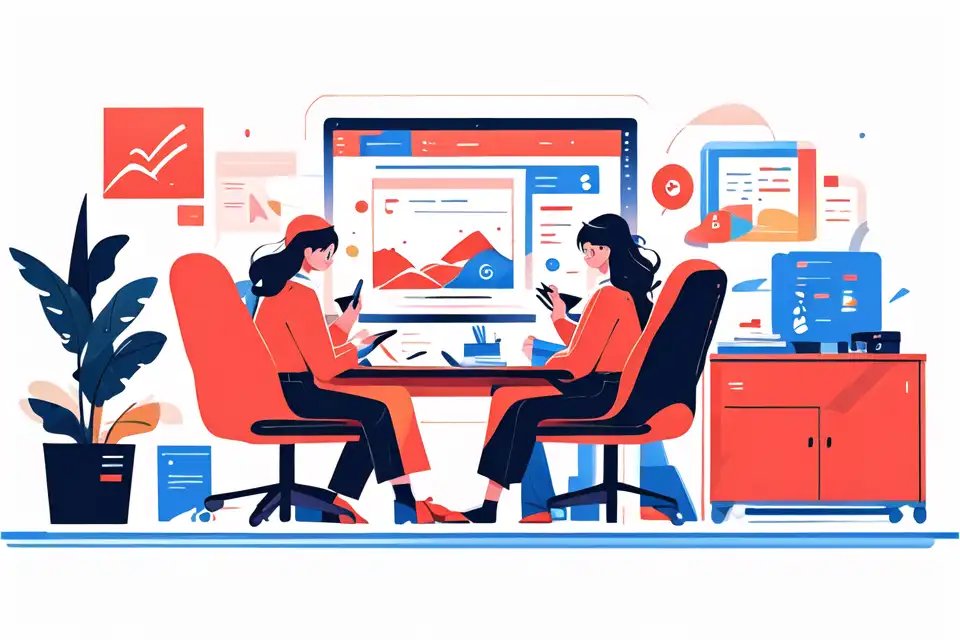Buy Online Pick Up In-Store (Bopis)
Enhance your understanding of Buy Online Pick Up In-Store (Bopis) and optimize your operations for success with Lark's solutions tailored for your specific needs in the retail industry.
Try Lark for Free
Use Lark Base to transform your retail business.
Executive summary
The Buy Online Pick Up In-Store (Bopis) model has become increasingly popular in the retail industry, with significant impacts and trends expected for 2024. This guide provides a comprehensive overview of Bopis, including its definition, significance, and role in the modern retail ecosystem. It also highlights best practices for implementation, ROI and performance metrics, strategies for enhancing omnichannel customer experience, optimizing operational efficiency, future-proofing retail strategy, and an actionable plan for 2024.
Understanding buy online pick up in-store (bopis) in modern retail
In the modern retail context, Buy Online Pick Up In-Store (Bopis) refers to the practice of allowing customers to make purchases online and then pick up their items at a physical store location. This model has gained significance due to its ability to bridge the gap between online and offline shopping experiences. It offers convenience to customers and helps retailers leverage their brick-and-mortar stores to meet customer demands. However, there are emerging trends and common misconceptions surrounding Bopis that retailers should be aware of. Understanding the role of Bopis in the retail ecosystem is crucial for successful implementation.
Implementation and best practices
To successfully integrate Bopis into retail operations, retailers should follow best practices for 2024. These include optimizing the Bopis process, overcoming challenges in adoption for different retail formats, and utilizing key technologies and tools. Retailers need to ensure a seamless and efficient Bopis experience for customers while addressing potential implementation challenges such as inventory management and workforce training.
Learn more about Lark x Retail solutions
Roi and performance metrics
Retailers should project their return on investment (ROI) and establish key performance indicators (KPIs) for Bopis in 2024. Measuring the impact of Bopis on sales, efficiency, and customer loyalty is essential for evaluating its success. By tracking these metrics, retailers can make data-driven decisions and continually improve their Bopis strategy.
Omnichannel and customer experience
Bopis plays a crucial role in creating an omnichannel customer experience by connecting in-store, online, and mobile processes. Retailers should focus on enhancing the customer journey across touchpoints and leveraging personalization strategies powered by Bopis. By providing a seamless and personalized experience, retailers can drive customer satisfaction and loyalty.
Learn more about Lark x Retail solutions
Operational efficiency
Efficient supply chain and inventory management are essential for successful Bopis implementation. Retailers should optimize their processes to ensure accurate inventory availability and streamline order fulfillment. Additionally, workforce management and training are crucial to ensuring a smooth Bopis experience for both employees and customers. Data security and compliance should also be prioritized to protect customer information.
Future-proofing retail strategy
As technology and consumer behaviors continue to evolve, retailers must future-proof their Bopis strategy. By staying ahead of emerging technologies and trends, retailers can maintain a competitive advantage. Long-term strategies should focus on adapting to future challenges and opportunities, such as integrating new technologies and expanding Bopis capabilities.
Learn more about Lark x Retail solutions
Action plan for 2024
To optimize Bopis in retail, retailers should follow a step-by-step guide that includes prioritization frameworks and KPIs for tracking success. This plan should outline the necessary actions and resources for implementing and supporting Bopis throughout the year. By following a structured approach, retailers can maximize the benefits of Bopis and drive business growth.
Conclusion and key takeaways
In conclusion, Buy Online Pick Up In-Store (Bopis) is a significant trend in retail for 2024. By understanding its definition, significance, and role in the retail ecosystem, retailers can effectively implement Bopis and reap its potential benefits. With the right strategies and best practices in place, retailers can enhance the omnichannel customer experience, optimize operational efficiency, and future-proof their retail strategy. Bopis presents an opportunity for retailers to bridge the gap between online and offline shopping, providing convenience and personalization to customers.
Learn more about Lark x Retail solutions
Do's and don'ts for buy online pick up in-store (bopis) in retail
| Do's | Don'ts |
|---|---|
| Train employees on Bopis processes and customer service | Neglect employee training and customer service |
| Optimize inventory management for accurate availability | Overlook inventory management and cause inconsistencies |
| Utilize technology and tools to streamline Bopis operations | Ignore technological advancements and rely on outdated methods |
| Focus on enhancing the customer experience across touchpoints | Neglect the customer experience and provide a subpar service |
| Monitor and measure key performance metrics for Bopis | Disregard data and analytics, making decisions based on intuition |
| Stay ahead of emerging technologies and trends | Remain stagnant and resistant to change |
Learn more about Lark x Retail solutions
Use Lark Base to transform your retail business.
